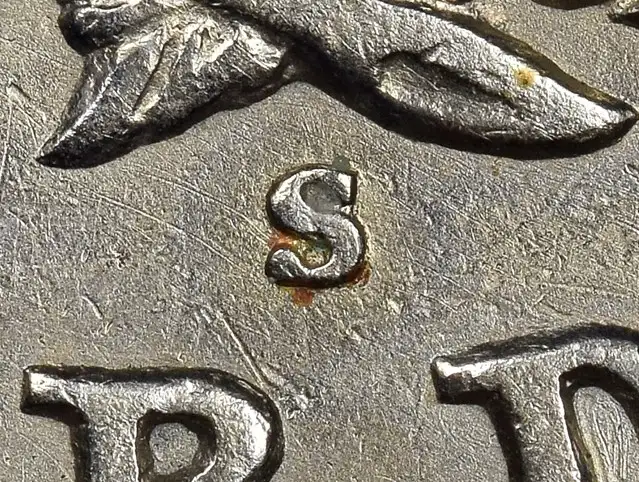NGC -
Some extra metal could cost an unsuspecting collector hundreds or more.In 1855 the new San Francisco Mint began issuing quarters with its "S" mintmark. In the series' third year there, mintage dipped to 82,000, whereas 9.6 million of the Philadelphia issue was struck. As a result, 1857-S
Seated Liberty quarters carry a significant numismatic premium compared to Philadelphia examples, which lack a mintmark below the eagle on the reverse.
The premium for 1857-S quarters starts at a few hundred dollars in all but the lowest grades and accelerates to thousands of dollars in mint state. Whenever something as small as a mintmark can make such a big difference in price, collectors should pay extra attention to the details.
Numismatic Guaranty Corporation (NGC) recently received a coin purporting to be an 1857-S quarter. Genuine examples have one of three die marriages. The mintmark is located in a different position on each reverse, but all three of the die marriages feature a large "S"—unlike the small letter that appears on this altered coin.
 A forger attempted to pass off this 1857 Philadelphia quarter as a San Francisco one. Discoloration around the added "S" is likely a result of the adhesive used to attach the mintmark. The genuine 1857-S Seated Liberty (top) and its spurious counterpart (bottom).
A forger attempted to pass off this 1857 Philadelphia quarter as a San Francisco one. Discoloration around the added "S" is likely a result of the adhesive used to attach the mintmark. The genuine 1857-S Seated Liberty (top) and its spurious counterpart (bottom).This piece's added mintmark is decades newer than the coin it has been placed on. It illustrates a familiar style known as "Trumpet Tail S," which was used on San Francisco Mint coins starting in 1941.
A closer look at the mintmark area reveals a halo of discoloration around the "S." This often occurs when a counterfeiter attaches a mintmark with an adhesive, though it's important to remember that phony mintmarks also can be added by sculpting the metal on the surface of the coin. Forgers can even add a mintmark by drilling into the edge of the piece using special equipment and embossing the mint mark upward from the inside of the coin! Embossed mintmarks can be especially deceptive and are seen most often on smooth-edged coins like
Buffalo nickels.
 The altered specimen bears a mintmark that is much newer than the coin it resides on. The borrowed "S" is significantly smaller than that of the genuine example.
The altered specimen bears a mintmark that is much newer than the coin it resides on. The borrowed "S" is significantly smaller than that of the genuine example.By studying price guides, collectors can become aware of coins that are most vulnerable to a mintmark alteration. Additionally, mintmarks can be removed relatively easily, which is what happened to the 1885 double eagle (gold $20) featured in the April 2021 edition of this column (p.69). In that case, a counterfeiter removed what was almost certainly an "S" mintmark to create a facsimile of a Philadelphia-issued coin that would have been worth thousands of dollars more than its San Francisco counterpart.
Read More: Counterfeit Detection Series Check out certified 1857-S Seated Liberty Quarters on ebay
Check out certified 1857-S Seated Liberty Quarters on ebay.
